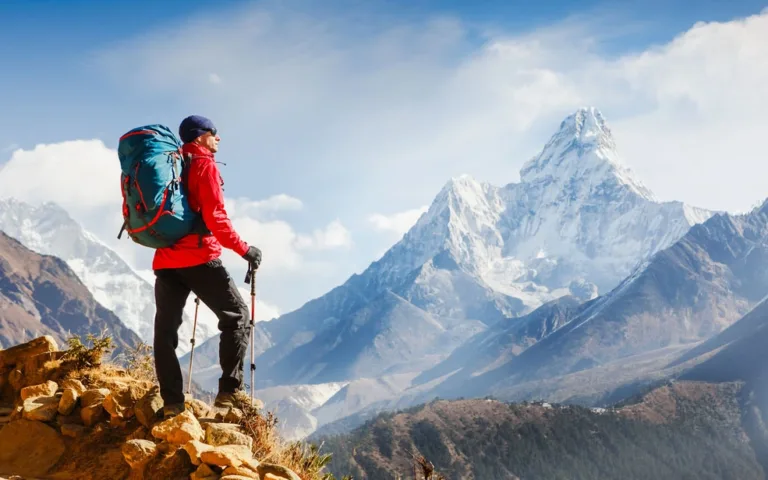A full-liquid diet revolves around consuming liquids or foods that naturally are or become liquid at room temperature. This includes drinks like tea and juice, desserts like Jell-O and pudding, plus creamy soups, milkshakes, and even popsicles. Unexpectedly, krill meat – known for its high protein content and omega-3 fatty acids – can also play a key role in this diet. By blending krill into smoothies or adding it to soups, your liquid meals gain an extra nutritional boost, setting you toward healthier living.
The Full Liquid Diet: A Comprehensive Guide
A full liquid diet entails consuming foods and fluids typically in liquid form or transitioning into liquid at room temperature. This diet includes strained creamy soups, tea, fruit juice, Jell-O, milkshakes, pudding, and popsicles. It’s often recommended for individuals undergoing medical tests, recovering from surgery, or struggling to swallow solid foods.
Krill-Based Nutritional Boost for Full Liquid Diets
It’s important to note that a traditional full-liquid diet may lack certain essential nutrients such as omega-3 fatty acids, proteins, and essential minerals. Here’s where incorporating krill-based liquids into the full liquid diet can truly make a difference. Krill, a tiny crustacean found in the ocean’s cold waters, is a rich source of omega-3 fatty acids and high-quality proteins. Individuals can benefit from these vital nutrients by integrating krill-based liquids into the full-liquid diet.
- Krill-based smoothies provide a convenient and nutritious meal replacement option for individuals following a full-liquid diet. They offer a refreshing taste and are packed with essential nutrients. Omega-3 fatty acids present in krill oil help support heart health and promote brain function. Additionally, the proteins in krill can aid in muscle recovery and support overall health.
- Furthermore, krill-based liquid supplements can effectively ensure that individuals on a full-liquid diet receive their required daily protein and omega-3 fatty acids without compromising taste or convenience.
- It’s crucial to recognize that maintaining adequate nutrition while adhering to a full-liquid diet can be challenging. Therefore, incorporating innovative sources of essential nutrients like krill-based liquids can play a vital role in optimizing the diet’s nutritional value while ensuring that individuals receive all the necessary elements for good health.
Advantages and Disadvantages of a Full Liquid Diet
At first glance, a full-liquid diet might seem restrictive, but it offers several benefits.
- Firstly, it provides necessary nutrients and hydration for individuals who may have difficulty consuming solid foods due to illness, surgery preparation, or swallowing difficulties. This diet ensures adequate nutrient intake and hydration when solid food is not an option.
- In medical settings, a full liquid diet is often used to prepare the digestive system before certain medical tests, procedures, or surgeries. This diet offers practical advantages in a medical context by providing necessary nutrients while being easier on the digestive system.
- Supplemental Nutrition Liquid supplements can also be integrated into a full-liquid diet to enhance overall nutrient intake. For example, supplements made from krill oil can offer additional benefits due to their omega-3 fatty acids content, which are vital for heart and brain health.
Disadvantages of a Full Liquid Diet
While there are clear advantages, it’s important to recognize the potential drawbacks of a full-liquid diet.
- One major concern is the risk of nutritional deficiency. With proper planning, a full liquid diet may provide enough fiber or essential vitamins and minerals, necessitating supplementation to meet key dietary requirements.
- To put things into perspective, consider when you’ve looked forward to enjoying meals with varying textures and flavors. A full-liquid diet consists primarily of liquids, which can make it physically and psychologically challenging for some individuals.
By understanding its benefits and potential downsides, individuals can decide whether a full liquid diet aligns with their health goals and dietary needs.
List of foods you can have on Full Liquid Diet
A full-liquid diet includes foods that will turn liquid at room or body temperature. This diet is often recommended for certain medical conditions, before or after surgeries, or digestive issues. Here’s a general list of foods typically allowed on a full liquid diet:
- Water – Essential for hydration.
- Broths – Clear broths like chicken, beef, or vegetable.
- Clear Juices – Like apple, cranberry, or grape juice without pulp.
- Tea and Coffee – Without milk or cream, though some plans allow milk.
- Sports Drinks – To help replace electrolytes.
- Gelatin (Jell-O) – Avoid red or purple if preparing for certain medical tests.
- Popsicles – Without bits of fruits or fruit pulp.
- Honey and Syrups – Can be added to liquids or used to sweeten foods.
- Soft Drinks and Lemonade – Ideally without caffeine.
- Milk and Milk Substitutes – Includes cow’s milk, soy, almond, and rice milk.
- Nutritional Drinks – Such as Ensure or Boost.
- Smooth Yogurt and Kefir – Without seeds or solids.
- Pureed Soups – Blended until smooth and strained to remove any solids.
- Ice Cream and Sorbet – Without nuts, chunks of chocolate, etc.
- Custard and Pudding.
Remember, the specific items allowed can vary depending on the reason for the diet and any individual restrictions. For example, some people might need to avoid certain sugars or fats even on a full-liquid diet. Always follow the guidelines provided by your healthcare provider or dietitian.
Essential Nutrients on a Full Liquid Diet
A full-liquid diet ensures your body receives the essential nutrients for optimal health. Most people aim to consume 1,350 to 1,500 calories and 45 grams of protein daily while on this diet.
One significant challenge with a full-liquid diet is a potential lack of nutrients essential for overall well-being, such as omega-3 fatty acids. Krill-based liquids offer a unique solution to this issue. They serve as an excellent source of omega-3 fatty acids, vital for heart and brain health, and reduce inflammation. By incorporating krill-based liquids into the diet, individuals can effectively supplement their omega-3 intake compared to traditional full-liquid options.
Benefits of Krill-Based Liquids
Krill-based liquids provide several key benefits that can enhance the nutritional value of a full-liquid diet.
| Key Benefits | Description |
| Omega-3 Fatty Acids | Krill oil is rich in omega-3 fatty acids, specifically EPA (eicosapentaenoic acid) and DHA (docosahexaenoic acid), known for their anti-inflammatory properties and role in supporting heart and brain health. |
| High-Quality Proteins | Apart from omega-3s, krill-based liquids also offer high-quality proteins that contribute to meeting daily protein intake requirements. Protein is essential for muscle repair, growth, and overall body function. |
| Vitamins and Minerals | Krill oil contains important vitamins and minerals, such as vitamins A, E, and astaxanthin, a potent antioxidant that supports cellular health. |
Harnessing the nutritional value of krill-based liquids allows individuals on a full-liquid diet to enjoy a more balanced intake of essential nutrients. This supplementation can help address deficiencies and support overall wellness while adhering to dietary restrictions.
Diet Restrictions and Medical Limitations
While a full liquid diet can provide temporary relief and support for those needing to prepare for a medical procedure or recover from certain conditions, it’s not suitable for everyone in the long run. It’s crucial to be aware of the potential diet restrictions and medical limitations that may impact certain individuals, especially over an extended period.
- Maintaining stable blood sugar levels is essential for people with diabetes’s overall health. Therefore, if considering a full liquid diet, it’s paramount to consult with a healthcare professional to create a plan that avoids sudden spikes or drops in blood sugar levels. Some individuals with diabetes may need to closely monitor their carbohydrate intake and adjust their insulin or medication dosage accordingly. Embarking on a full-liquid diet without medical supervision is not recommended for those with diabetes.
- In addition, specific medical conditions may necessitate caution when adopting a full-liquid diet. If an individual suffers from gastrointestinal disorders or has undergone stomach or intestinal surgery, certain modifications to the diet might be necessary. Dietary fiber, vitamins, and minerals often found in solid foods may be lacking in a full liquid diet, which can pose challenges for those already at risk of nutrient deficiencies due to various medical conditions.
It is important to consult with a healthcare professional before starting such a diet, particularly for those with diabetes or specific medical conditions.
Coping Strategies while on a Full Liquid Diet
When faced with a restrictive full-liquid diet, it’s natural to encounter challenges in dealing with the limitations. However, there are ways to make this dietary regimen more manageable and enjoyable. Here are some tips to help you cope:
Nutritional and Sensory Variety
One of the biggest challenges of a full-liquid diet is monotony. The lack of texture and variety can lead to dissatisfaction and discouragement. Individuals can enhance their diet’s flavor and nutritional content by incorporating krill-based liquids, contributing to a more positive overall experience. These liquids align with the full liquid diet and offer a unique taste and an added boost of omega-3 fatty acids.
Professional Guidance and Counseling
Seeking advice from healthcare professionals or consulting with a registered dietitian specializing in liquid nutrition can offer valuable insights and personalized recommendations.
Incorporating these coping strategies when following a full liquid diet, particularly by introducing krill-based liquids for both nutritional and sensory variety, can alleviate potential dissatisfaction with the diet’s limitations. Overall, embracing variety, seeking support, and exploring innovative recipes help create a more positive experience within the constraints of a full-liquid diet.
Conclusion
A full liquid diet is an essential dietary approach often prescribed for individuals who have difficulty chewing, swallowing, or digesting solid foods. This diet plays a crucial role in providing the necessary nutrients, calories, and hydration, which are pivotal for recovery, particularly after surgeries or during certain medical conditions. By incorporating a variety of liquid foods that turn to liquid at room temperature or melt at body temperature, such as soups, broths, milkshakes, and smoothies, this diet ensures a balanced intake of essential nutrients while easing the digestive process.
FAQs About Full Liquid Diets
What Is The Difference Between A Full-Liquid Diet And A Clear-Liquid Diet?
A clear liquid diet consists of see-through liquids like water, tea, and broth, offering minimal nutritional value. In contrast, a full liquid diet includes all clear liquids plus foods that become liquid at room temperature or body temperature, such as milk, ice cream, and cream soups. This provides more comprehensive nutrition, including essential calories and proteins.
How Long Should I Stay On A Full-Liquid Diet?
Healthcare providers typically recommend a full liquid diet for a short duration, usually a few days to two weeks. This period allows the body to heal from surgery or manage certain medical conditions without the strain of digesting solid foods.
Can I Lose Weight On A Liquid Diet?
Yes, a liquid diet can result in short-term weight loss due to reduced calorie intake. However, dietitian Isabel Smith warns that while you may lose a few pounds, the weight can return quickly once you resume a regular diet. Liquid meal replacements offer structure and can be part of a weight management plan, but they should be used under professional guidance to ensure balanced nutrition.
What Foods Can I Consume On A Full Liquid Diet?
A full liquid diet includes a variety of foods, such as:
- Broths and Soups: Vegetable broth, cream soups
- Dairy and Alternatives: Milk, yoghurt, soy milk, almond milk, ice cream, milkshakes
- Puddings and Custards: Pudding, custard
- Fruits and Juices: Fruit juices without pulp, nectars, pureed fruits, applesauce
- Supplements and Smoothies: Protein shakes, smoothies, nutritional supplements
- Other Options: Coffee, tea, gelatin, popsicles, sorbet, oatmeal without chunks
Why Might I Need A Full Liquid Diet?
A full liquid diet is often necessary after gastrointestinal surgery or during recovery from illnesses affecting the mouth, throat, or digestive system. It provides essential nourishment without the need for extensive chewing or digestion, aiding in a smoother recovery process.











